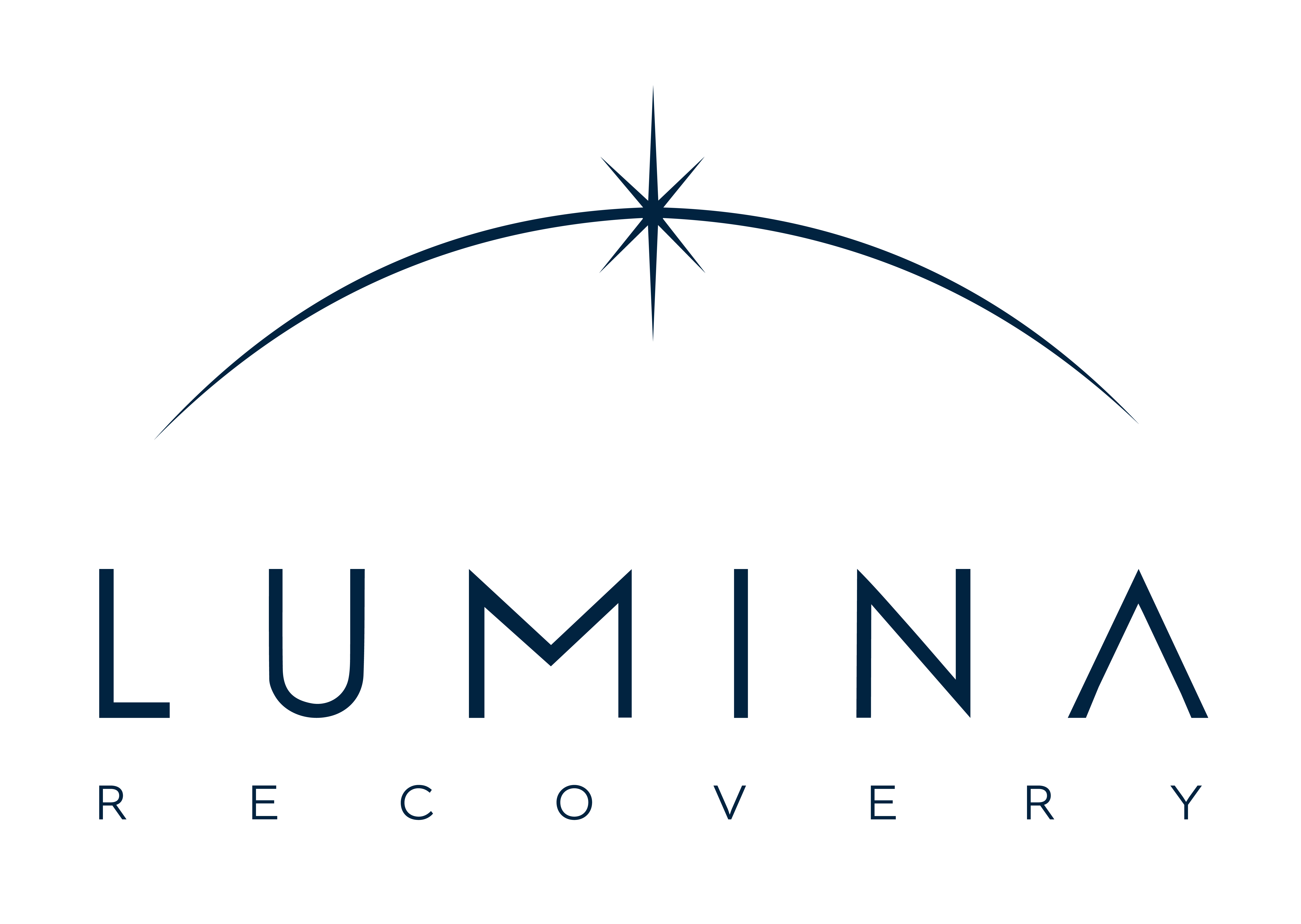
Our Addiction Resources
Navigating the world of addiction and recovery can be overwhelming. We’re here to provide clear, compassionate education and guidance. From practical advice for maintaining sobriety to informational guidance on the long-term effects of substance abuse, our content is a beacon of hope and understanding.
Our Team is Ready are ready to take your call
Call us Today!
or we can call you. Fill out form below
Our Blog

Understanding the Different Types of Depression
Depression is a common type of mood disorder, affecting millions globally. It varies from mild feelings of sadness to severe symptoms that can significantly impact daily life. Recognizing the various types of depression is crucial for finding the right treatment and support.
What makes depression even more challenging is its link to addiction, as many individuals turn to substances to manage overwhelming emotions. That is why it is important to be educated about the most common forms of depression and how each increases the risk of substance use and addiction.
1. Major Depressive Disorder (MDD)
Major depressive disorder (MDD), or clinical depression, is characterized by persistent feelings of sadness, hopelessness, or worthlessness lasting for at least two weeks. It is the most common and severe form of depression, often accompanied by physical symptoms such as changes in sleep, appetite, and a loss of interest in activities.1
Individuals with MDD frequently experience a decline in daily functioning, and the severity of their emotional pain can push them toward substance use as a form of self-medication. Unfortunately, this leads to a greater risk of addiction, as drugs or alcohol provide temporary relief but worsen the underlying depression over time.
2. Persistent Depressive Disorder (PDD)
Formerly known as dysthymia, PDD involves a continuous low mood lasting for at a minimum of two years. Although the symptoms are not as intense as MDD, the long-lasting nature of PDD makes it a chronic condition that can lead individuals to feel that their depression is just “part of life.”1
This ongoing struggle increases the likelihood of turning to substances like alcohol or drugs to cope with PDD, gradually leading to dependency.
3. Disruptive Mood Dysregulation Disorder (DMDD)
DMDD typically affects children and is marked by chronic irritability and frequent temper outbursts. The condition usually begins before age 10, making it difficult for children to manage their emotions.1
While primarily seen in younger individuals, untreated DMDD can lead to behavioral issues later in life, including an increased risk of turning to substances to deal with ongoing emotional turmoil and frustration.
4. Premenstrual Dysphoric Disorder (PMDD)
PMDD is a more severe form of premenstrual syndrome (PMS), with emotional symptoms such as irritability, anxiety, and depression occurring in the days leading up to menstruation. For some, these symptoms can be severe enough to interfere with daily activities.
Due to the cyclical nature of PMDD, individuals may seek relief through substance use, which temporarily dulls the mood swings but increases the risk of addiction over time.
5. Bipolar Disorder
Bipolar disorder includes alternating periods of depression and mania. The depressive episodes mirror those of MDD, with feelings of sadness and hopelessness, while the manic episodes involve heightened energy, impulsivity, and risky behaviors.2
During manic phases, individuals may be more prone to engage in substance use, particularly as a result of impaired judgment. The combination of extreme mood shifts and risky behavior puts individuals with bipolar disorder at a higher risk of developing substance abuse issues.

6. Seasonal Affective Disorder (SAD)
SAD is a form of depression that follows a seasonal pattern, often occurring in the winter when there is less sunlight. The reduced daylight can lead to feelings of fatigue, irritability, and a decrease in motivation, with the depressive symptoms lifting once spring arrives.
Individuals with SAD may turn to alcohol or other substances to escape the seasonal lows, ultimately increasing their risk of addiction during the darker months.
7. Psychotic Depression
Psychotic depression is a severe type of depression where individuals experience psychotic symptoms in addition to their depressive state. These can include hallucinations, delusions, or paranoia.2
The presence of these symptoms, combined with depression, makes psychotic depression particularly dangerous, as individuals may seek to numb their experiences through substance use, leading to addiction.
8. Prenatal Depression
Prenatal depression occurs during pregnancy and is often influenced by hormonal changes that affect mood. Those experiencing prenatal depression may feel persistent sadness, irritability, or anxiety.2
This condition is more likely to occur in individuals with a history of mental illness, those facing stressful life events, or those who lack support during pregnancy. For some, the emotional strain of prenatal depression can lead to substance use as a way to cope, putting both the parent and the unborn child at risk.
9. Postpartum Depression (PPD)
PPD, also known as peripartum or postnatal depression, occurs after childbirth. It’s more severe than the “baby blues” and involves feelings of intense sadness, anxiety, or hopelessness. These emotions can interfere with a mother’s ability to bond with her baby or perform everyday tasks.2
In some cases, postpartum psychosis may develop, which includes hallucinations or delusions. PPD can lead new mothers to use substances as a way to cope with their emotions, increasing the risk of addiction.
10. Situational Depression
Situational depression, or adjustment disorder, occurs in response to a specific event, such as the loss of a loved one, a traumatic experience, or a significant life change. While everyone experiences sadness after difficult events, situational depression goes beyond normal grief and disrupts daily life.
The emotional weight of the situation may drive individuals to seek comfort in substances, but without proper support, this can quickly evolve into dependency and addiction.
Connection Between Depression and Addiction
Depression and addiction are closely linked, as people with depression often turn to drugs or alcohol to alleviate their emotional pain. However, this self-medication strategy doesn’t address the root of the problem and can worsen both conditions.
The temporary relief provided by substances can lead to repeated use, creating a dangerous cycle of addiction. Over time, this can develop into a dual diagnosis, where individuals struggle with both depression and substance abuse, requiring a comprehensive treatment approach.
Heal From Depression and Addiction With Lumina Recovery
If you or a loved one experiences depression and has turned to substance use for relief, it’s essential to seek help as soon as possible. Both depression and addiction are treatable conditions, but they require professional care.
Lumina Recovery’s dual diagnosis program addresses both depression and addiction, providing holistic care for individuals who struggle with the interconnected challenges of mental health disorders and substance use.
If you or a loved one is struggling with depression and addiction, don’t hesitate to reach out for the support you deserve.
Sources:

Kratom: The Dangers of This Vape Shop Drug
Kratom has become a widely available substance, often found in vape shops and gas stations across the United States. Though its legal status and ease of access make it seem harmless, growing concerns about its addictive potential and health risks are now emerging.
For individuals struggling with substance use or their concerned loved ones, understanding the dangers of kratom is essential to recognize why this “legal” drug might be more dangerous than it seems.
What Is Kratom?
Kratom (Mitragyna speciosa) is a plant native to Southeast Asia. The Drug Enforcement Administration (DEA) states that kratom leaves contain psychoactive ingredients mitragynine and 7-hydroxymitragynine. They produce stimulant effects like increased energy at lower doses and sedative effects at higher doses.1
Traditionally, kratom has been used in its native regions for centuries to help with fatigue, pain, and opioid withdrawal. Today, it is processed into powders, capsules, and liquids and sold commercially.
Despite its historical uses, kratom has become a controversial substance in the West due to its potential for misuse and addiction. While some people use kratom to self-treat pain or opioid dependence, its unregulated status in the U.S. means that users might be unaware of its risks or may not understand how to use it safely.
Why Is Kratom Sold in Vape Shops?
Kratom’s presence in vape shops can be partly explained by its strong association with tobacco and nicotine use. Research shows that individuals who use nicotine, particularly through vaping, are more likely to use kratom as well. A study revealed that three-quarters of U.S. adults who reported using kratom in the past year also used tobacco at least monthly.2
Furthermore, people who vape nicotine have more than three times the odds of using kratom compared to non-vapers. This trend extends to adolescents, with those who smoke cigarettes being more likely to have tried kratom.2
Kratom’s availability in vape shops can also be attributed to a lack of regulation. While restrictions on flavored tobacco products have been increasing, there are few laws governing the sale of kratom in most areas. This makes it easy for vape shops to stock kratom alongside other non-nicotine products like CBD or delta-8-THC.
Additionally, kratom’s legal status allows it to be sold in smoke shops, where people often buy tobacco or cannabis-related items. These shops may promote kratom as an alternative or complementary product, especially to customers already purchasing nicotine products.
Growing Concerns About Kratom’s Addictive Potential
While kratom is legal in most states, it is far from being a risk-free substance. One of the biggest concerns surrounding kratom is its potential for addiction. Kratom interacts with the brain’s opioid receptors, similar to how prescription opioids or heroin do. This means that frequent or high-dose kratom use can lead to physical dependence and addiction, much like other opioids.1
Many users who start taking kratom for pain relief or mood enhancement can develop tolerance over time. This means they need higher doses to achieve the same effects, putting them at an increased risk of addiction. As tolerance builds, individuals may find themselves using kratom more frequently, making it harder to stop without experiencing withdrawal symptoms such as nausea, irritability, or muscle aches.
Unfortunately, because kratom is sold in legal, accessible locations like vape shops, its addictive potential is often downplayed or misunderstood. Users may not realize the danger of becoming dependent on the substance until they are already struggling with addiction.
The Health Risks of Kratom Use
Beyond its addictive potential, kratom use comes with a range of health risks that consumers may not be fully aware of. Though often marketed as a natural remedy, kratom’s effects on the body can be severe, particularly when used long-term or in high doses. Some of the most concerning health risks and side effects include:3
- Liver damage
- High blood pressure
- Depression
- Trouble breathing
- Tremors and seizures
- Weight loss

Legal Availability and the False Sense of Security
One of the most misleading aspects of kratom use is the false sense of security that comes from its legal availability. Because it can be found in vape shops and other retail outlets, many people assume kratom is safe and effective.
However, kratom has been linked to a small number of deaths, though these fatalities are far fewer compared to those caused by other drugs. It’s important to note that almost all of these deaths involved the use of other substances, such as opioids, alcohol, or prescription medications, which may have played a significant role in the outcomes.3
This combination of legal availability and the perception that kratom is a “natural” remedy contributes to users underestimating the risks. People might believe that because kratom is easy to purchase and sold in everyday retail environments, it carries no serious health risks.
In reality, the unregulated nature of kratom products means that users are not always aware of the quality or potency they are consuming, increasing the potential for safety issues. This makes it critical for individuals to understand that legal does not always mean safe, and professional guidance is essential when dealing with substances like kratom.
How to Get Help for Kratom Addiction
If you or someone you care about is struggling with kratom addiction, it’s crucial to seek professional support. Treatment options include inpatient and outpatient programs that offer medically assisted detox, therapy, and support to manage withdrawal symptoms and address the underlying causes of addiction.
A personalized care plan ensures that individuals receive the right treatment tailored to their needs, whether it’s counseling, group therapy, or medication-assisted treatment. Early intervention can prevent further health risks, so reach out to a trusted recovery center to begin the path to recovery.
Get Help for Kratom Addiction With Lumina Recovery
Kratom’s growing presence in vape shops across the U.S. reflects a larger issue: the misconception that legality equals safety. While kratom may be legal in many states, its health risks and addictive potential are becoming increasingly clear. For individuals struggling with substance use or for their loved ones, understanding the dangers of kratom is vital to making informed decisions about treatment and recovery.
Lumina Recovery offers inpatient and outpatient services designed to support individuals struggling with kratom addiction, providing personalized care and evidence-based treatment plans.
If you or a loved one is struggling with kratom addiction, reach out to Lumina Recovery for the support you need.
Sources:

7 Natural Ways to Boost Dopamine Levels
Dopamine is often referred to as the “feel-good” chemical in our brains. It plays a key role in how we experience pleasure, motivation, and reward. For individuals struggling with addiction, dopamine is especially important.
Many substances, such as drugs and alcohol, artificially increase levels of dopamine, leading to a cycle of dependence as the brain craves the dopamine boost.
However, it’s possible to naturally boost dopamine levels without relying on harmful substances. Knowing how to boost dopamine naturally can be particularly helpful for those in addiction recovery as they work to restore balance in their brain’s chemistry.
The Role of Dopamine in Addiction and Recovery
Dopamine plays a significant role in the cycle of addiction. When someone uses addictive substances, it triggers a dopamine release, creating a strong sense of pleasure. Over time, the brain adjusts to these high levels by producing less dopamine naturally, which makes it harder to experience pleasure without the substance. This leads to cravings and compulsive behaviors as the individual tries to regain that “high.”1
During addiction recovery, one of the primary goals is to reestablish the brain’s natural dopamine activity. This is where natural methods of boosting dopamine levels in the brain become essential. By encouraging the brain to produce dopamine through healthy activities, those in recovery can start to feel better and reduce their dependence on substances.
1. Diet and Nutrition
What we eat can significantly impact dopamine levels. Certain foods contain precursors to dopamine or can stimulate its production. Including these foods in your diet can help support dopamine levels and enhance overall well-being during recovery.
- Tyrosine-rich foods: Tyrosine is an amino acid that the brain uses to produce dopamine. Foods such as almonds, bananas, avocados, chicken, turkey, and dairy products are excellent sources of tyrosine. Including these in your diet can help ensure your brain has the building blocks it needs for dopamine production.
- Antioxidant-rich foods: Oxidative stress can reduce dopamine production, so consuming foods high in antioxidants is beneficial. Berries, leafy greens, and dark chocolate can help protect the brain from oxidative damage and support dopamine levels.
- Probiotics: Gut health plays a role in the production of neurotransmitters, including dopamine. Eating foods rich in probiotics, such as yogurt, kefir, and fermented foods like sauerkraut, can support a healthy gut and enhance dopamine production.
2. Exercise
Regular physical activity is one of the most effective natural ways to boost dopamine levels. Exercise not only releases dopamine but also helps balance other brain chemicals like serotonin and endorphins, improving mood and reducing stress. Engaging in aerobic activities like running, swimming, cycling, or even brisk walking can help increase dopamine production.
In addiction recovery, exercise is particularly important. It helps the brain heal from the damage caused by substance abuse and restores natural dopamine production. Additionally, exercise provides a healthy way to cope with stress and cravings, offering a positive alternative to substance use.
3. Mindfulness and Meditation
Mindfulness and meditation are powerful tools for naturally increasing dopamine levels. Practicing mindfulness can help boost dopamine production by reducing stress and promoting a sense of well-being. Mindfulness helps individuals stay present and focus on the here and now, which is particularly valuable for those in recovery, as it encourages self-awareness and emotional regulation.
Meditation, especially mindfulness-based stress reduction (MBSR) techniques, has been linked to increased dopamine release. Even short meditation sessions can improve focus, reduce anxiety, and promote a sense of calm—all of which support the brain’s natural ability to produce dopamine.
4. Adequate Sleep
Sleep is crucial for maintaining healthy dopamine levels. When we are sleep-deprived, dopamine receptors in the brain are less sensitive, which can lead to mood swings, lack of focus, and an overall feeling of lethargy. In contrast, getting enough rest helps regulate dopamine levels and improves physical and mental health.
For individuals recovering from addiction, sleep patterns are often disrupted, making it even more important to prioritize good sleep hygiene. Having a consistent sleep routine, reducing caffeine or stimulating activities before bed, and making a relaxing sleep environment can help improve the quality of sleep and support dopamine production.

5. Sunlight Exposure
Spending time in the sunlight can naturally increase dopamine levels. Sunlight exposure helps the brain produce more dopamine and also boosts serotonin, another neurotransmitter that affects mood and well-being. For people in recovery, sunlight exposure can help improve mood and reduce the likelihood of depression, which is common during the early stages of sobriety.
Simply spending 15-30 minutes a day outside, whether by walking, sitting in a park, or practicing outdoor yoga, can have a significant positive impact on dopamine production.
6. Listening to Music
Music has a profound effect on the brain’s dopamine levels. Listening to your favorite tunes can help trigger the release of dopamine, creating feelings of pleasure and happiness. This is why music can be a valuable tool for managing emotions and stress during addiction recovery.
Creating a playlist of uplifting or soothing music can offer a quick and easy way to boost dopamine levels, helping you feel more positive and motivated.
7. Setting and Achieving Small Goals
Dopamine is the brain’s reward chemical, which means it’s released not only when we experience pleasure but also when we accomplish tasks. Setting small, manageable goals and achieving them can help stimulate dopamine release.
This doesn’t have to be anything major—even completing daily tasks like cleaning, cooking, or exercising can lead to a sense of accomplishment and boost dopamine levels.
For those in recovery, setting small goals related to health, relationships, or personal development can provide a steady source of motivation and dopamine.
Reclaim Balance and Wellness With Lumina Recovery
Understanding the role of dopamine in addiction and recovery is key to maintaining sobriety and mental well-being. While addiction depletes dopamine, there are numerous natural ways to boost its levels, helping the brain recover and function more normally. These natural methods not only support dopamine levels but also encourage healthier habits and a more balanced approach to life, both of which are essential for long-term recovery.
At Lumina Recovery, our therapy and dual diagnosis support address both addiction and underlying mental health conditions, helping restore natural dopamine levels and promote long-term recovery.
For personalized support and guidance on your recovery journey, contact Lumina Recovery today.
Source:

5 Natural Ways to Lower Cortisol and Reduce Stress
In the journey of addiction recovery, managing stress is essential. Stress can often trigger cravings and lead to relapse, making it crucial to find ways to reduce it naturally. Cortisol, known as the “stress hormone,” plays a significant role in how our bodies handle stress through the “fight or flight” response.
Higher cortisol levels are often linked to increased stress and anxiety, which can exacerbate addiction triggers. There are natural ways to lower cortisol and reduce stress, helping those in recovery find balance and avoid relapse.
The Role of Cortisol in Stress and Addiction
Cortisol is produced by the adrenal glands in response to stress. In short bursts, it helps you handle stressful situations by increasing energy and focus. However, chronic stress can lead to consistently high cortisol levels, which can negatively impact mental and physical health long-term, including high blood pressure, weight gain, impaired immunity, and more.1
For someone in addiction recovery, high cortisol levels can make it more difficult to stay on track. Increased stress can heighten the risk of relapse, as it often triggers cravings for substances that provide temporary relief.
By incorporating these five methods to reduce cortisol naturally, you can effectively manage cortisol levels, leading to better emotional regulation and reduced stress:
1. Exercise
One of the most effective ways to lower cortisol is through regular exercise. Physical activity reduces the levels of stress hormones like cortisol while releasing endorphins, the body’s natural mood boosters. Exercise does not need to be strenuous to have an impact. Simple activities like walking, yoga, or swimming can have significant benefits.
In particular, yoga combines physical movement with breath control and mindfulness, making it a powerful tool for managing stress. Yoga lowers cortisol levels and helps reduce anxiety, both of which are key factors in preventing addiction relapse.
For those in recovery, exercising regularly can also provide structure, a sense of accomplishment, and a healthy outlet for emotional expression. It can be especially helpful in redirecting cravings into positive, restorative activities.
2. Meditation and Mindfulness
Meditation and mindfulness practices have long been known to reduce stress and promote emotional well-being. These practices help you focus on the present moment, reducing the tendency to dwell on negative thoughts or future worries, both of which can increase cortisol levels.
Mindfulness meditation, in particular, can help those in addiction recovery by training the mind to observe thoughts without judgment. This practice is invaluable for managing cravings and emotional triggers that may lead to relapse. Regular meditation can lower cortisol and improve overall mental health.
Guided meditation apps or classes can be an excellent way to start for beginners. Even a short daily practice of five to ten minutes can create noticeable changes in stress levels over time.
3. Balanced Diet
What you eat plays a significant role in your body’s ability to manage stress. A balanced diet full of fruits and vegetables can help regulate cortisol levels and improve your overall mood.
Processed foods high in added sugar and unhealthy fats tend to increase stress and cortisol, while whole foods rich in vitamins and minerals support healthy brain function and reduce anxiety.
Foods that are particularly beneficial for lowering cortisol include:
- Leafy greens: Rich in magnesium, which helps regulate cortisol and supports a healthy nervous system.
- Fatty fish: Omega-3 fatty acids found in fish like salmon and mackerel help reduce inflammation and cortisol levels.
- Probiotic-rich foods: Foods like yogurt, kefir, and fermented vegetables improve gut health, which has a direct impact on cortisol regulation and mental well-being.
- Berries: High in antioxidants, berries help lower inflammation and protect against cortisol spikes.
Eating small, balanced meals throughout the day can also help regulate blood sugar levels, preventing the dips that can trigger stress and cortisol release.
4. Have Fun and Laugh
Having fun and laughing has significant benefits for your mental and physical well-being. Laughter promotes the release of endorphins, which are natural mood boosters, while also suppressing stress hormones like cortisol. Laughter is linked to a better mood, reduced stress, lower perceived pain, decreased blood pressure, and a stronger immune system.1
Interestingly, both authentic and forced laughter can help lower stress levels. A unique example of this is laughter yoga, a form of yoga that incorporates intentional bouts of laughter as part of the practice. Laughter yoga can lower cortisol levels, reduce stress, and improve mood. It also increases perceived energy levels, making it easier to stay positive and engaged during recovery.
Developing hobbies that bring joy can also help lower cortisol. Activities like gardening, listening to music, or dancing are excellent ways to have fun, relax, and boost your overall sense of well-being. These hobbies not only improve mood but also create a sense of purpose and accomplishment, which is especially valuable during addiction recovery.

5. Take Care of a Pet
Caring for a pet can be a powerful way to reduce stress and lower cortisol levels. The bond between humans and animals is known to create feelings of comfort and security, which can naturally lower stress levels. Interaction with animals, particularly therapy dogs, can reduce stress and cortisol during stressful situations.
Many long-term care homes, universities, and colleges have introduced pet therapy programs because of the stress-relieving benefits that pets provide. Whether it’s spending time with a dog, cat, or another pet, caring for an animal companion can offer emotional support, lower cortisol levels, and help individuals cope with stress in a natural and comforting way.
For those in recovery, having a pet can provide unconditional love, a sense of routine, and a distraction from cravings or emotional triggers.
The Connection Between Chronic Stress and Addiction Relapse
Chronic stress is one of the most significant triggers for addiction relapse. When cortisol levels remain high due to prolonged stress, it can lead to feelings of hopelessness, fatigue, and emotional instability. These feelings may push someone in recovery to seek relief through substances, thus risking a relapse.
Reducing cortisol levels naturally through strategies such as exercise, meditation, and a healthy diet can help maintain emotional balance. This approach not only benefits overall health but also strengthens resilience against relapse. For those in recovery, managing stress is not just about coping with everyday life but about safeguarding the progress made in sobriety.
Achieve Balance and Lower Stress With Lumina Recovery
Managing stress naturally is a crucial part of addiction recovery. High cortisol levels from chronic stress can increase the risk of relapse, making it vital to incorporate strategies like exercise, meditation, and a balanced diet to reduce stress. By taking proactive steps to lower cortisol levels, those in recovery can enhance their emotional resilience and improve their chances of long-term success.
Lumina Recovery offers dual diagnosis treatment for individuals facing both addiction and stress-related mental health challenges, ensuring holistic care.
For personalized support in managing stress and maintaining recovery, contact Lumina Recovery today.
Source:

How Environment Plays a Role in Addiction
Addiction is a complex issue influenced by various factors, and one of the key elements in its development is the environment. From the home environment to social settings, the spaces where we spend our time can greatly affect our behaviors, including the likelihood of developing addictive patterns.
The environment and addiction are closely linked, with each influencing the other. One’s surroundings can also play an essential role in the recovery process. Whether you are struggling with addiction or are concerned about a loved one, understanding how the environment impacts addiction is crucial in creating healthier, more supportive settings.
Understanding Addiction and Environment
When discussing addiction, many people focus on individual choices and biological predispositions, but the environment is often an overlooked factor. The connection between addiction and environment is powerful and can significantly influence someone’s vulnerability to substance abuse.
The places we live, work, and socialize shape our habits, stress levels, and emotional well-being. For many people, their environment can either act as a risk factor for substance abuse or serve as a protective factor against it.
Environmental Factors of Addiction
Certain environmental factors of addiction can increase the likelihood of developing a substance use disorder. These can range from living in a stressful home situation to growing up in a community with high rates of drug and alcohol use.
For example, children who grow up in households where addiction is prevalent are more likely to develop substance use problems later in life. Additionally, peer pressure in social settings, particularly among adolescents and young adults, can also be a significant environmental factor contributing to addiction.1
Other risk factors of substance abuse include exposure to trauma or adverse experiences, which are often tied to one’s environment. Living in an environment where emotional, physical, or sexual abuse occurs can lead individuals to turn to substances as a means of coping with their pain and anxiety.
Similarly, communities with a high availability of drugs and alcohol, combined with social acceptance of substance use, can push individuals toward addictive behaviors.
The Role of Social Environments in Addiction
Social environments play a major role in shaping addiction. People often mimic the behaviors of those around them, especially in social circles that normalize or encourage drug or alcohol use. For example, individuals who frequently spend time with friends who regularly drink or use drugs are more likely to engage in these behaviors themselves.
On the flip side, a supportive social environment can help prevent addiction or assist in recovery. Surrounding yourself with individuals who prioritize health and sobriety creates a positive, reinforcing atmosphere. It is easier to resist temptation when friends and family provide encouragement, support, and accountability.
The Impact of Home Environments on Addiction
The home environment is one of the most immediate and impactful factors in a person’s life. The home can either be a safe haven or a place filled with stress and instability, both of which have profound effects on mental and emotional health.
An unstable home environment, characterized by frequent conflict, neglect, or substance abuse by other household members, is one of the most significant environmental factors in addiction. Individuals growing up or living in these settings are at a higher risk of turning to substances as a coping mechanism.1
Conversely, a home environment that fosters open communication, emotional support, and stability can provide the groundwork for healthy coping strategies, reducing the risk of addiction. In some cases, removing oneself from a toxic home environment can be an essential part of recovery, allowing individuals to distance themselves from triggers and unhealthy dynamics.

How Changing Your Environment Can Support Recovery
Recovery from addiction often requires more than just willpower, but also making significant changes in one’s surroundings. Removing environmental triggers, such as places, people, or situations that are linked to substance use, is a vital step in the process.
For instance, someone recovering from alcohol addiction might choose to avoid social environments where drinking is common, such as bars or parties.
Changing environments can be one of the most effective ways to create a fresh start. For many people, attending inpatient rehab is an important part of recovery because it allows them to leave behind environments that contribute to their addiction.
A change in setting can provide a sense of safety and control, free from the stresses and temptations of previous environments. These facilities create structured environments that focus on healing, allowing individuals to break free from negative influences and adopt new, healthier habits.
Finding the Right Environment for Long-Term Recovery
Long-term recovery also depends on creating a supportive environment after treatment. Moving back into the same setting where addiction took hold can be dangerous, especially if the environment has not changed. Instead, finding new living arrangements, such as sober living homes, can help individuals maintain their sobriety while gradually reintegrating into daily life.
Sober living environments provide structured, drug-free spaces that support recovery by surrounding individuals with others who share the same goal of staying sober.
Building an environment that supports recovery may also involve changing social circles and finding new hobbies or activities that promote a healthy lifestyle. Many people in recovery find that avoiding old social settings and making friends with people who support sobriety helps them stay on track.
The Role of Community in Recovery
Beyond the immediate environment of home or rehab, community plays a significant role in both the development of addiction and recovery. Communities with high levels of substance abuse, economic instability, or lack of access to mental health services can foster higher rates of addiction.
In contrast, communities that prioritize wellness provide access to support groups, and promote mental health awareness can have a protective effect. Engaging with a supportive community, whether through recovery meetings, therapy groups, or sober social activities, creates a network of accountability and encouragement.
These spaces not only provide a place to discuss struggles, but also offer role models who have overcome addiction and maintained long-term sobriety. A strong community environment can be a powerful force in helping individuals remain committed to their recovery journey.
Change Your Environment and Transform Your Life With Lumina Recovery
The relationship between addiction and environment is a crucial factor in understanding how addictive behaviors develop and how recovery can be sustained. Environmental factors such as the home, social circles, and community can either contribute to the risk of substance abuse or serve as protective elements that promote healing. Changing one’s environment is often a key part of recovery, offering a fresh start and a chance to build new, healthy habits.
Lumina Recovery offers both inpatient and outpatient treatment options, providing individuals the flexibility to recover in a supportive environment, making it easier to create lasting changes in the environments that contribute to addiction.
For guidance and support on creating a recovery-friendly environment, reach out to Lumina Recovery today.
Source:

The Connection Between Peer Pressure and Addiction
What is peer pressure? Peer pressure is a powerful force that can shape decisions, behaviors, and life choices, including the use of alcohol and drugs. Although often associated with adolescence, peer pressure is something that adults experience as well.
The influence of others can lead to both positive and negative outcomes, but when it comes to addiction, peer pressure often plays a detrimental role.
Peer Pressure and Substance Abuse
Peer pressure can be a significant factor in the initiation of substance use, particularly when individuals are trying to fit into a social group or avoid feeling left out. It can lead to experimenting with drugs, alcohol, or other substances that, over time, might result in addiction.
The connection between peer pressure and substance abuse is particularly evident during social gatherings, where people may feel compelled to use substances to fit in. When surrounded by peers who are drinking alcohol or using drugs, the individual might feel that participating is the only way they’ll be accepted. This pressure can increase the likelihood of trying substances, even when one is fully aware of the risks.
Peer pressure often doesn’t manifest in an obvious, forceful way. Instead, it might come in subtle suggestions or casual remarks, such as, “Just have one drink,” or “Everyone else is doing it.” These small nudges can accumulate, making it harder to say no over time.
Peer Pressure and Alcohol
Alcohol is one of the most common substances associated with peer pressure, especially in social settings where drinking is normalized. The fear of being labeled as the “odd one out” often leads individuals to consume alcohol against their better judgment. Over time, this can evolve from casual drinking to dependency.
In fact, many people underestimate how easy it is to develop an addiction to alcohol. What starts as a few drinks at parties or gatherings can spiral into regular use, leading to potential health risks and alcoholism. Adults, in particular, may face pressure at professional networking events or casual get-togethers with friends where drinking is seen as a way to bond or relax.
Peer Pressure and Drugs
While alcohol is commonly associated with social settings, peer pressure and drugs go hand in hand as well. Some individuals may be encouraged to try recreational drugs, particularly if they see friends or peers using them without visible negative consequences. This can be especially dangerous because of the addictive nature of many substances.
For instance, people might feel pressured to try marijuana, cocaine, or other drugs as a way to feel included or “enhance” their social experiences. Unfortunately, these experiences can lead to a dependency on these substances, especially when the person is predisposed to addiction or has a vulnerable state of mind.
Adult Peer Pressure: A Hidden Struggle
While many associate peer pressure with teenagers, it is a reality for adults as well. Adults face peer pressure in both their personal and professional lives, often feeling the need to conform to certain behaviors or social expectations. This can happen during work functions where alcohol is consumed or in social circles where drug use is normalized.
What many adults don’t realize is that peer pressure in adulthood can be just as strong and damaging as it is for younger individuals. The expectations to keep up appearances, maintain social connections, or avoid conflict can lead adults to engage in risky behaviors, such as substance use.
Examples of Peer Pressure in Action
Peer pressure comes in many forms and can be as direct as being offered a substance or as indirect as observing others using it. Here are a few examples of peer pressure in various contexts:
- Social Situations: Friends at a party are using drugs, and the individual feels obligated to join in to avoid being the “outsider.”
- Workplace Events: At a company happy hour, everyone is drinking, and there is an unspoken expectation for all attendees to participate in the drinking culture.
- Family Gatherings: During holidays or reunions, family members may encourage drinking as part of a celebration, making it difficult for an individual to abstain.
- Recreational Groups: In certain hobby or sports groups, drugs might be viewed as part of enhancing performance or bonding, pressuring individuals to use substances to fit in.
These examples illustrate the diverse ways peer pressure can manifest, regardless of age or circumstance.

Avoiding Situations of Peer Pressure
Recognizing peer pressure is the first step toward avoiding it. It’s important to remember that standing up for personal values and making independent decisions is not a sign of weakness but a reflection of strength. Here are some strategies to avoid giving in to peer pressure:
- Establish clear personal boundaries about substance use. If you’ve decided to avoid drugs and alcohol, remind yourself of your reasons for doing so.
- When faced with situations where peer pressure might arise, it’s helpful to have a response prepared. A simple, “No thanks, I don’t drink/use,” is often enough to avoid further pressure.
- Surrounding yourself with individuals who respect your choices will reduce the likelihood of encountering pressure to use substances.
- If you find yourself in a setting where you feel pressured to drink or use drugs, it’s okay to remove yourself from the situation.
Take Control of Your Choices With Lumina Recovery
Peer pressure and addiction are closely linked, affecting both teenagers and adults. By understanding the dynamics of peer pressure and how it influences substance use, individuals can better protect themselves from these risky situations. Remember that it’s never too late to take control of your choices, and avoiding peer pressure is a key part of maintaining sobriety and overall health.
At Lumina Recovery, our therapy programs and dual diagnosis support help individuals not only overcome addiction but also address underlying mental health issues, empowering them to resist peer pressure and build a healthier, more resilient life.
If you or a loved one is struggling with addiction due to peer pressure, reach out to Lumina Recovery for support today.

Seasonal Affective Disorder and Its Link to Addiction
Seasonal affective disorder (SAD) is a type of depression that occurs at specific times of the year, most commonly during the fall and winter months when daylight is limited. For many individuals, these darker months can bring about feelings of sadness, low energy levels, and a sense of isolation.
Unfortunately, for those struggling with addiction or at risk of developing one, SAD can make them more vulnerable to turning to substances as a coping mechanism. That is why it is important to know how SAD affects mental health and how it can increase the risk of addiction.
What Is Seasonal Affective Disorder?
Seasonal affective disorder, often referred to as seasonal depression or winter blues, is a mental health condition characterized by the onset of depressive episodes and symptoms during certain seasons, typically when daylight hours decrease.1
The reduction in natural, bright light during fall and winter can disrupt a person’s biological clock and circadian rhythm, affect serotonin levels, and increase melatonin production, all of which contribute to the feelings of depression, lethargy, and mood swings experienced by people with SAD. While the disorder primarily occurs in winter, some people can experience SAD in the summer months, although this is less common.1
The symptoms of SAD can vary from person to person but often include feelings of sadness, loss of interest in activities, difficulty concentrating, and changes in appetite and sleep patterns. These changes in mental health can not only lead to depression but also make it harder to resist addictive behaviors.
How SAD Affects Brain Chemistry
The link between seasonal affective disorder and addiction starts with the way SAD impacts brain chemistry. Decreased exposure to sunlight affects the production of serotonin, a neurotransmitter responsible for regulating mood, happiness, and anxiety. When serotonin levels drop, people with SAD are more likely to experience feelings of depression and emotional distress.1
At the same time, the body increases its production of melatonin, the hormone that regulates sleep. As melatonin levels rise in response to the darker days, people with SAD often feel fatigued and sluggish, which can deepen the sense of hopelessness.1
This imbalance in serotonin and melatonin can create a perfect storm for depression to set in, increasing the likelihood that someone might turn to alcohol or drugs as a means of self-medicating these distressing symptoms.
For individuals prone to addiction, this brain chemistry imbalance can make it easier to fall into addictive patterns. The discomfort of depression combined with low energy may drive someone to use substances as a quick fix to relieve the sadness, numb the emotional pain, or simply feel more awake and alert.
SAD and Addiction as a Coping Mechanism
Addiction and seasonal affective disorder can be intertwined when people turn to substances as a way to cope with the overwhelming feelings brought on by seasonal depression. People struggling with SAD may begin using alcohol, prescription drugs, or illicit substances to alleviate their depression, anxiety, or fatigue.
For instance, alcohol, a depressant, might be used to numb feelings of sadness, while stimulants such as cocaine or amphetamines might be used to combat lethargy and a lack of energy.
The temporary relief provided by substances can make it harder for individuals to realize the harmful cycle they are entering. Substance use might initially seem like a solution to the overwhelming feelings caused by SAD, but over time, it can lead to dependency and addiction.
As the effects of substances wear off, the person is often left feeling worse than before, needing more of the substance to cope with their depressive symptoms. This cycle of using substances to deal with SAD can easily spiral into addiction, trapping the individual in a dangerous loop of self-medication.
Increased Vulnerability During Certain Seasons
For those already dealing with addiction, the onset of SAD can exacerbate their existing struggles. The combination of shorter days, increased isolation, and a lack of motivation during the colder months can make staying sober more difficult.
The cravings to use substances may become more intense as a person tries to escape the harsh reality of their depression and the sense of isolation that can come with the changing seasons.
Seasonal depression is particularly dangerous for those in early recovery. The feelings of loneliness and boredom can trigger relapse in the winter months if not managed properly. Individuals diagnosed with bipolar disorder are also at a higher risk of developing SAD.1
For this reason, it’s important for individuals with SAD to seek help from mental health professionals and addiction specialists to develop healthy coping mechanisms.

Breaking the Cycle: Treatment Options
Fortunately, there are effective ways to treat both seasonal affective disorder and addiction. SAD typically involves a combination of treatments including light therapy, cognitive behavioral therapy (CBT), and, in some cases, antidepressant medications.
Light therapy, which uses a special lightbox to simulate natural sunlight, can help balance melatonin and serotonin levels, lifting the symptoms of seasonal depression.
CBT is highly effective in helping individuals identify negative thought patterns and replace them with healthier behaviors and coping strategies, which is especially useful in preventing addiction relapse.
For those struggling with addiction alongside SAD, a holistic treatment plan is crucial. Addiction treatment centers that offer dual diagnosis programs can address both the mental health condition and the addiction simultaneously.
Through counseling, medication management, and support groups, individuals can learn to manage both their addiction and SAD, reducing the risk of relapse and improving overall well-being.
Reclaim Your Life From Addiction and Seasonal Depression With Lumina Recovery
Understanding the connection between seasonal affective disorder and addiction is essential for anyone struggling with seasonal depression or substance abuse. By recognizing the ways in which SAD can heighten vulnerability to addiction, individuals and their loved ones can take proactive steps to seek help and prevent substance abuse from becoming a coping mechanism for their seasonal depression.
Lumina Recovery provides different addiction treatment options and dual diagnosis support for individuals facing both substance abuse and depression, including major depressive disorder and seasonal affective disorder. This ensures that clients receive personalized care for their mental health and addiction challenges.
If you or a loved one is struggling with addiction and seasonal depression, contact Lumina Recovery today for compassionate support and expert care.
Source:

What Is Precipitated Withdrawal?
When a person is working on their opioid addiction, the process of withdrawal can be physically and mentally challenging. One complication that can arise during this process is called precipitated withdrawal.
This condition, often triggered by the administration of opioid antagonists like naloxone, can be particularly severe for individuals with opioid dependency. The information ahead will discuss precipitated withdrawal, how it occurs, the symptoms it presents, and the importance of medical supervision to prevent or manage precipitated withdrawal during detox.
Understanding Precipitated Withdrawal
Precipitated withdrawal occurs when an opioid antagonist, like naloxone or naltrexone, is given to a person with opioid dependence. These medications block opioid effects by displacing opioids from mu-opioid receptors in the brain, which are responsible for pain relief and euphoria. When given too soon after opioid use, antagonists can trigger sudden and severe withdrawal symptoms.1
Full opioid agonists, such as morphine, heroin, and fentanyl, fully activate these receptors, producing maximum effects. In contrast, partial agonists like buprenorphine activate the receptors partially, easing withdrawal symptoms while still preventing other opioids from binding to them.1
In addition to full and partial agonists, the timing of administering opioid antagonists plays a crucial role in precipitated withdrawal. If an antagonist like naloxone is given before opioids have sufficiently cleared from the body, the sudden displacement of opioids from the receptors can result in an abrupt onset of withdrawal symptoms.
This is why medical professionals often monitor the timing and dosage of these medications carefully to prevent precipitated withdrawal. For individuals dependent on long-acting opioids, a slower detox process using partial agonists like buprenorphine can help minimize the risk of severe withdrawal.
Symptoms of Precipitated Withdrawal
The symptoms of precipitated withdrawal can be far more intense than typical opioid withdrawal. While traditional opioid withdrawal is characterized by symptoms such as nausea, anxiety, muscle aches, and insomnia, precipitated withdrawal can present more rapidly and severely, including:1
- Severe nausea and vomiting
- Intense sweating
- Agitation
- Diarrhea
- Rapid heartbeat
- Extreme tiredness
These symptoms can emerge within minutes to hours of taking an opioid antagonist, making it a frightening and painful experience for individuals in opioid detox.
Why Medical Supervision Is Critical During Detox
Detoxing from opioids is a delicate process that requires careful medical oversight to minimize the risk of complications like precipitated withdrawal. For individuals who are dependent on opioids, medical professionals are trained to ensure that withdrawal occurs safely and gradually. In the case of opioid antagonists like naloxone, medical professionals can assess whether the patient is in the right stage of detoxification for such medications.
In cases where naloxone or another antagonist is used to reverse an opioid overdose, it is typically done in a medical emergency setting. However, in cases where individuals are undergoing opioid detox, the timing of administering these medications must be carefully considered. If administered too soon after opioid use, the risk of precipitated withdrawal increases significantly.
Medical supervision during detox helps manage symptoms and ensures that medications like opioid antagonists are used appropriately. For some people, a slow tapering process with long-acting opioids like methadone or buprenorphine may be suggested. This helps avoid the harsh effects of sudden withdrawal. Buprenorphine, for instance, acts as a partial opioid agonist that can help ease withdrawal symptoms without the high risk of precipitated withdrawal.

Preventing Precipitated Withdrawal
One of the most effective ways to avoid precipitated withdrawal is to allow enough time to pass between a person’s last opioid use and the administration of an opioid antagonist. This period allows the body to begin its natural withdrawal process gradually rather than triggering it suddenly with medication.
In medically supervised detox settings, clinicians can use various strategies to manage withdrawal and minimize discomfort. For example, in some cases, smaller doses of opioid antagonists may be used, or the individual may be gradually transitioned onto medications that help manage withdrawal symptoms before an opioid antagonist is administered.
Another method is to use supportive medications to help manage symptoms of withdrawal. These can include anti-nausea medications, anti-anxiety medications, and pain relievers that address the physical and emotional effects of withdrawal without introducing opioids back into the system.
The Importance of Seeking Help
Seeking treatment for opioid use disorder is critical, especially when facing the risks associated with detox, such as precipitated withdrawal. Detoxing from opioids should not be done alone. The process can be hard on the body and risky without medical help.
Professional treatment centers provide the necessary medical support to monitor withdrawal symptoms, administer medications safely, and address complications like precipitated withdrawal if they arise. Medical professionals can carefully guide patients through the withdrawal process, reducing discomfort and ensuring safety.
To seek help, it is important to reach out to an addiction treatment center that offers a medically supervised detox program. To ensure the safest and most effective path to recovery, look for facilities that provide comprehensive care, including medical monitoring, individualized treatment plans, and support throughout the detox process.
Getting professional help can greatly lower the chance of problems. It can also help you or your loved one recover safely. Never hesitate to seek support, as early intervention can save lives and provide the foundation for long-term sobriety.
Start Your Recovery Journey Safely With Lumina Recovery
Precipitated withdrawal is a serious condition that can occur when opioid antagonists like naloxone are administered to someone with opioid dependency. It happens because these medications displace opioids from their receptors too quickly, triggering rapid and severe withdrawal symptoms. Understanding how precipitated withdrawal happens and its symptoms shows the important need for medical supervision during opioid detox.
If you or a loved one is facing opioid dependency, Lumina Recovery has professional help to ensure that the detox process is as safe and comfortable as possible, minimizing the risk of precipitated withdrawal.
Contact Lumina Recovery today to ensure a medically supervised, safe, and comfortable detox process for you or your loved one.
Source:

5 Crucial Lifestyle Changes for Addiction Recovery
Leaving rehab after achieving sobriety can be both liberating and daunting. Surrounded by
supportive therapists, counselors, and peers who have cheered you on throughout your journey,
you now confront the “what now?” moment as you re-enter the world. It’s natural to wonder how to navigate life without the coping mechanisms of alcohol or drugs. The first thing to remember is you’re not alone—and taking it one step at a time can help guide you forward in establishing a routine for living a sober life.
Making Changes to Maintain a Sober Lifestyle
Transforming your lifestyle after rehab is crucial for achieving lasting recovery. Our goal is to
offer practical suggestions that support the rebuilding of your physical, mental, and
emotional well-being, alongside essential lifestyle changes that facilitate your transition
back into everyday life. Here are some helpful tips to guide you on your journey to staying sober:
1. Have a Plan to Handle Triggers
One of the most important steps in addiction recovery is having a clear plan for managing triggers. Triggers can be people, places, emotions, or situations that tempt you to revert to old behaviors. Developing a strategy for handling them can make all the difference in maintaining your progress. Here’s how to create an effective plan for dealing with triggers and remaining sober:
Identify your triggers. Start by making a list of situations, emotions, or environments that make you feel the urge to use. This could include stress, loneliness, certain social settings, or even specific times of the day. The more you understand what prompts these urges, the better prepared you’ll be.
Create a distraction toolkit. When a trigger arises, having a list of activities that can distract and calm you can be very helpful. This might include going for a walk, calling a supportive friend or family member, practicing deep breathing exercises, or engaging in a hobby. By turning your attention to a healthy alternative, you can reduce the power of the trigger.
Practice grounding techniques. Triggers often create a rush of anxiety or craving. Grounding exercises like the 5-4-3-2-1 technique—naming five things you can see, four you can touch, three you can hear, two you can smell, and one you can taste—can help you refocus on the present moment and reduce stress.
Set boundaries with people or places. Sometimes, avoiding triggers means creating boundaries. If certain people or places are closely tied to your past habits, it’s important to limit your exposure to them during recovery. Letting trusted friends and family know about your boundaries can also help you stay accountable.
Plan for cravings. Cravings can come on suddenly, so it’s important to have a plan for what to do when they strike. This might include practicing a breathing exercise, repeating a mantra like “This feeling will pass,” or using a mindfulness app that guides you through the moment. It’s also helpful to have a list of phone numbers you can call when you need immediate support.
2. Set a Regular Sleep Schedule
A consistent sleep schedule is a cornerstone of a balanced life, especially a sober life. Going to bed and waking up at the same time each day helps regulate your body’s internal clock, leading to better sleep quality and improved mood. This routine can enhance your resilience to stress and help you face daily challenges with a clearer mind.
Aim for 7-9 hours of sleep each night, and create a calming bedtime routine, like reading or listening to soft music, to help signal to your body that it’s time to wind down.
3. Ease Into Exercise
Physical activity releases endorphins, which can help elevate your mood, reduce stress, and combat feelings of anxiety or depression. This doesn’t mean you need to hit the gym every day—simple activities like walking, stretching, or yoga can be just as effective. Aim to incorporate movement into your routine for at least 30 minutes most days, whether it’s a morning walk, an evening jog, or even dancing to your favorite songs.
Finding an activity you enjoy can make it easier to stay consistent. Consider trying different forms of exercise like cycling, swimming, or joining a group fitness class. If you prefer a more solitary approach, guided online workouts or setting up a small home workout space can help you stay active.

4. Plan Your Meals
Planning balanced meals with lean proteins, whole grains, and plenty of fruits and vegetables can stabilize your energy and mood throughout the day. Preparing meals ahead of time reduces the temptation to reach for unhealthy snacks when stress levels rise. Staying hydrated is equally important—drinking plenty of water helps combat fatigue and keeps you feeling your best.
Additionally, having a consistent meal schedule can provide structure and a sense of control, making it easier to manage cravings and maintain focus throughout the day. Try setting specific times for meals and snacks to avoid unplanned eating that can disrupt your progress. This intentional approach to nutrition can be a comforting and grounding part of your daily routine, reinforcing your commitment to a healthier lifestyle.
5. Get Involved in Your Community
Engaging in hobbies in your community can help you feel less lonely while boosting creativity. Here are some enriching options to meet people and grow as a person:
- Volunteer at an animal shelter or farm—you’ll get to care for animals while enjoying their affection and companionship.
- Attend workshops on traditional crafts, cooking, or music from various cultures to promote creativity and community connection.
- Get involved with organizations providing meals and support to those in need to enhance your sense of purpose.
- Join environmental conservation projects, such as beach clean-ups or tree planting, to connect with nature while making a positive impact.
Find Support at Lumina Recovery
At Lumina Recovery, we understand that transitioning back to daily life after treatment can be a
difficult journey—that’s why we offer a continuum of care to support you no matter where you are in your recovery. From detox programs to inpatient treatment to sober living homes, we have an option that can be personalized to your needs, giving you the tools you need to succeed.
Don’t let stress drive you back to substances—reach out to our compassionate team today. We’re here to support you every step of the way. Remember, YOU matter, no matter where you are.
Additional Resources
Once you have completed your rehabilitation program at one of our drug and alcohol treatment centers, you should try to surround yourself with people who can encourage you to stay sober. Many people find that support groups are the best source of encouragement. You can find hundreds of support groups and meetings in your community. Our drug addiction treatment centers stress the importance of personal chemical dependency resources, especially when you are new to sobriety. Below are various addiction and mental health resources for people in recovery who want additional support.
Christian Addiction Recovery Resources
Our substance abuse services aren’t limited to specific programs, but rather we believe in the importance of incorporating faith-based programs to promote spiritual healing, like our Faith in Recovery program.
With that said, below are some faith-based addiction recovery resources that could help you in your spiritual healing from addiction:
- Battlefield of the Mind by Joyce Meyer
- Boundaries by Dr. Henry Cloud & Dr. John Townsend
- Christian Families in Recovery: A Guide for Addiction, Recovery, and Intervention Using God’s Tools of Redemption by Robert and Stephanie Tucker
- Club New Life Christian Ministry for Addiction and Recovery
- Lost & Found: Recovery in Christ by Bruce Stanley
- Overcoming Emotional Obstacles through Faith: Navigating the Mind Field by Anthony Acampora, Director of Banyan’s Faith in Recovery Program
- The Case for Christ by Lee Strobel
Mental Health Resources for Recovery
Lumina Recovery consist of both mental health and substance abuse treatment facilities, meaning we offer mental health resources as well as chemical dependency resources. What’s more, addiction often co-occurs with mental illness, making these resources ever more important.
Below are some resources for mental health recovery that can help you or your loved one:
- This Emotional Life video series
- No Kidding, Me 2!! with Joe Pantoliano
- Dare: The New Way to End Anxiety and Stop Panic Attacks by Barry McDonagh
- Pleasure Unwoven: An Explanation of the Brain Disease of Addiction by Kevin McCauley
- Declutter Your Mind: How to Stop Worrying, Relieve Anxiety, and Eliminate Negative Thinking by S.J. Scott and Barrie Davenport
Call Us Today – (877) 716-7515

